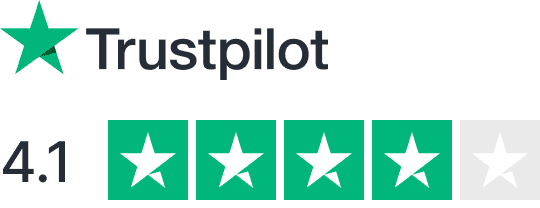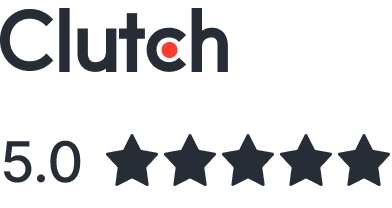Need to scale your IT team fast or access specialized skills without long-term hiring? IT staff augmentation lets you integrate global tech talent into your projects while keeping full control over workflows and costs. Here’s a quick breakdown of what you’ll learn:
- What is IT Staff Augmentation? A flexible way to add skilled professionals to your team without full-time commitments.
- Key Benefits:
- Cut hiring costs by up to 50% (e.g., save $100K annually with LATAM talent).
- Scale teams quickly to meet tight deadlines.
- Access global expertise in AI, cybersecurity, cloud architecture, and more.
- Why LATAM Talent? Lower costs, aligned time zones, strong technical skills, and excellent communication.
- Staff Augmentation vs. Outsourcing:
- Control: You manage the team vs. vendor-managed.
- Flexibility: Easily scalable vs. fixed contracts.
Quick Comparison:
| Aspect | Staff Augmentation | Outsourcing |
|---|---|---|
| Control | You directly manage the team members | Vendor oversees the team |
| Integration | Professionals work within your processes | External team operates independently |
| Flexibility | Easily scalable based on your needs | Bound by fixed contracts and terms |
| Project Oversight | Managed by your organization | Delegated to the vendor |
Want to save costs, meet deadlines, and access global talent? IT staff augmentation might be your solution.
Don’t make this mistake! Staff Augmentation vs Outsourcing …
Main Advantages
IT staff augmentation offers several clear benefits that can make a big difference for businesses.
Cutting Costs
Hiring a senior engineer in New York can cost around $180,000 per year. By using augmented talent, businesses can cut these expenses by 40–50%. On top of that, traditional hiring comes with extra costs like recruitment fees, office space, equipment, HR support, and expenses tied to employee turnover.
Scaling Teams Quickly
With staff augmentation, companies can expand their technical teams fast to meet tight deadlines. This approach skips the long hiring process and avoids severance costs, allowing businesses to respond to time-sensitive projects while keeping control over quality and managing fluctuating workloads effectively.
Accessing Specialized Talent
Staff augmentation opens the door to a global network of highly skilled IT professionals in various fields:
| Expertise | Benefit |
|---|---|
| AI & Machine Learning | Connects you with hard-to-find developers worldwide |
| Cybersecurity | Brings in certified security specialists |
| Cloud Architecture | Links you with experts for specific platforms |
| Legacy Systems | Provides access to specialists in older technologies |
LATAM IT Talent Benefits
Hiring IT professionals from Latin America offers a smart way to address budget constraints while filling specialized roles. This approach helps companies manage costs, bridge talent gaps, and ensures smooth collaboration.
Lower Hiring Costs
Hiring from LATAM can significantly reduce expenses. Here’s a breakdown of annual salary ranges and how they compare to U.S. salaries:
| Role | Annual Salary Range | Savings vs. U.S. Salaries |
|---|---|---|
| Software Engineer | $36,000–$55,000 | 57.01% |
| DevOps/SRE | $48,000–$60,000 | 54.97% |
| QA Engineer | $18,000–$66,000 | 56.17% |
| Full-Stack Developer | $48,000–$78,000 | 35.85% |
And it’s not just about salaries. For example, Kordis reported saving over $100,000 annually by hiring skilled LATAM professionals who excel in remote work environments.
Timezone Matching
Working with LATAM talent eliminates major time zone challenges. This makes real-time collaboration possible, which is especially important for agile development and project management:
"One of the key advantages of nearshoring to Latin America is the minimal time zone difference. This proximity allows for real-time collaboration, which is crucial for agile development processes and effective project management."
Skills and Communication
LATAM IT professionals bring a strong mix of technical expertise and effective communication to the table:
- STEM Strength: In Mexico, 26% of graduates earn STEM degrees, surpassing the U.S., while Brazil boasts 17%.
- Proven Track Record: Tribu successfully hired a LATAM candidate in just 24 days, cutting costs by $37,000 annually.
- Highly Qualified: Many LATAM professionals hold degrees from respected institutions and have substantial industry experience. Major tech hubs like São Paulo, Buenos Aires, and Mexico City also feature strong English proficiency, ensuring seamless communication.
These benefits make LATAM talent an excellent choice for building integrated, high-performing teams, as explored further in the next section.
sbb-itb-a3fbb4e
Team Integration Steps
Leveraging LATAM talent effectively depends on a structured integration plan that emphasizes clear communication and measurable results. Here’s how to seamlessly integrate augmented IT staff into your team.
Setting Clear Goals
Before onboarding, define specific project objectives and required skills. Key areas to outline include:
- Technical needs: Identify the expertise required for the project.
- Project scope and timelines: Set expectations for deliverables and deadlines.
- Communication protocols: Establish reporting structures and preferred tools.
- Performance metrics: Define success with measurable outcomes.
For instance, instead of vague goals, aim for something specific like "reduce sprint completion time by 25% within 90 days."
Onboarding Process
A well-thought-out onboarding process is essential for seamless integration. Focus on these three areas:
- Technical Setup Equip new team members with access to essential tools and platforms:
- Development environments
- Version control systems
- Project management tools
- Communication platforms (e.g., Slack, Microsoft Teams)
- Documentation repositories
- Team Integration Help new members feel part of the team:
- Schedule introductions with key team members.
- Assign a mentor from the existing team.
- Hold regular check-ins during the first month.
- Share communication guidelines to ensure smooth collaboration.
- Project Familiarization Provide a comprehensive understanding of the project:
- Explain the project’s architecture.
- Share coding standards and best practices.
- Walk through the sprint planning process.
- Outline quality assurance procedures.
Once onboarding is complete, keep an eye on progress to ensure smooth adaptation.
Progress Tracking
Use key performance indicators (KPIs) to monitor integration and performance. Here’s a quick guide:
| Tracking Area | Metrics | Frequency |
|---|---|---|
| Code Quality | Pull request acceptance rate, bug density | Weekly |
| Productivity | Story points completed, sprint velocity | Bi-weekly |
| Communication | Meeting attendance, documentation updates | Daily |
| Team Integration | Peer feedback, collaboration effectiveness | Monthly |
Additionally, conduct bi-weekly one-on-ones to discuss progress, address challenges, and evaluate team collaboration.
Common Use Cases
Staff augmentation offers practical solutions to a variety of business challenges. From meeting tight deadlines to bringing in specialized expertise, it provides the flexibility and resources companies need to address specific project demands.
Quick Project Completion
Tight deadlines or unexpected project demands can put immense pressure on internal teams. Staff augmentation helps by providing immediate access to skilled developers, enabling companies to scale up quickly without sacrificing quality or missing deadlines.
Here are some examples:
- Adding specialized developers in just three days to meet urgent submission deadlines.
- Deploying experts in both legacy and modern technologies to speed up system migrations.
- Bolstering teams with QA specialists and developers to resolve critical issues promptly.
This approach also works well for handling seasonal workload peaks, allowing companies to maintain regular operations while tackling temporary surges in demand.
Hiring Technical Experts
Sometimes, projects require niche expertise that isn’t available in-house. Staff augmentation makes it easier to bring in professionals for specific tasks without committing to long-term hires. Examples include:
- Cybersecurity experts for conducting audits and ensuring compliance.
- Data scientists for building machine learning models and managing data pipelines.
- Cloud architects for cloud migration and infrastructure optimization.
- DevOps specialists to improve CI/CD workflows and automation.
"Software development staff augmentation is a game-changer for businesses seeking to build a strong development team without a lengthy hiring process." – WillDom
Beyond individual roles, staff augmentation also supports large-scale team expansion for major projects.
Scaling Teams for Large Projects
Big projects often require sustained team growth over time. Staff augmentation allows companies to expand their workforce in a structured, efficient way. Key strategies include:
- Phased Integration: Adding team members gradually to match the evolving needs of the project.
- Skill Distribution: Balancing senior and mid-level developers to blend expertise with cost efficiency.
- Knowledge Sharing: Pairing external staff with internal teams to ensure smooth collaboration and knowledge transfer.
For enterprise-level projects, this controlled approach ensures that new resources are effectively integrated while maintaining steady progress. Clear communication, ongoing training, and regular progress reviews are critical to keeping everyone aligned with project goals and company standards.
Conclusion
IT staff augmentation offers a practical way to boost technical capabilities and streamline operations. It provides clear benefits compared to traditional hiring methods.
This model helps companies save costs while ensuring high-quality results. By enabling quick team scaling and access to specialized skills, it meets the needs of businesses with tight deadlines or unique project demands.
Choosing LATAM tech talent brings several perks:
- Aligned time zones for seamless collaboration
- Familiarity with U.S. business practices for smoother teamwork
- Expertise in modern technologies to tackle complex challenges
- Competitive rates that balance affordability with quality
For success, companies should focus on setting clear goals, using strong NDAs, defining roles, and tracking performance closely. These practices ensure the best outcomes, as discussed earlier.
In today’s digital age, staff augmentation continues to provide a reliable way to access skilled talent while staying within budget. It’s a strategy that helps businesses cut costs and maintain quality across their projects.
















